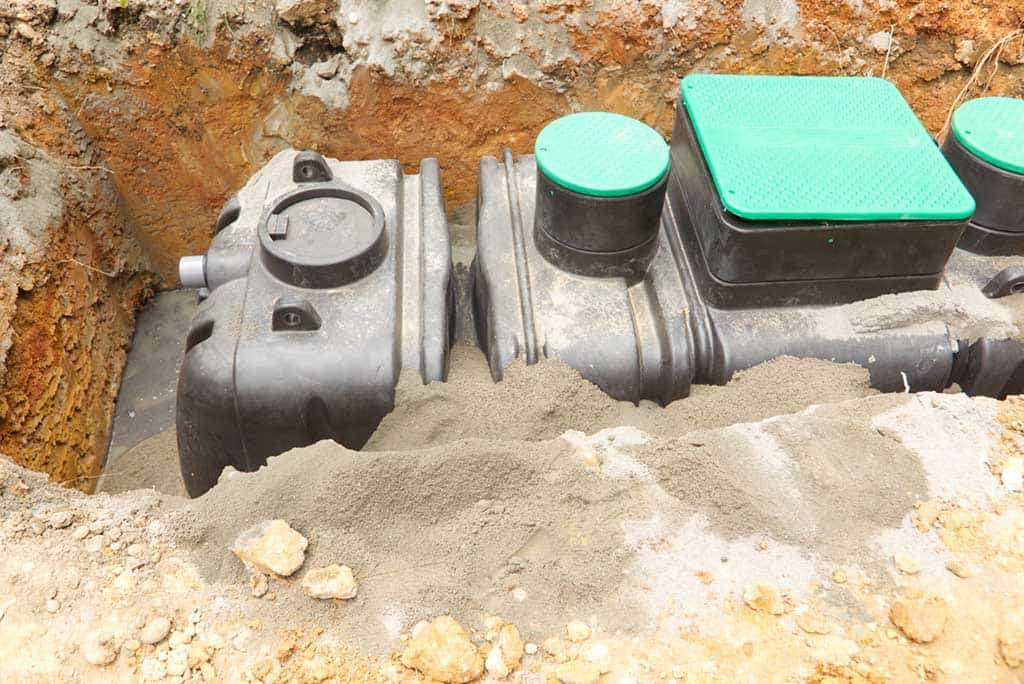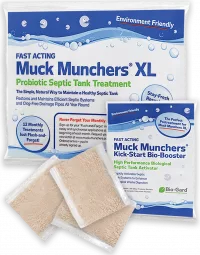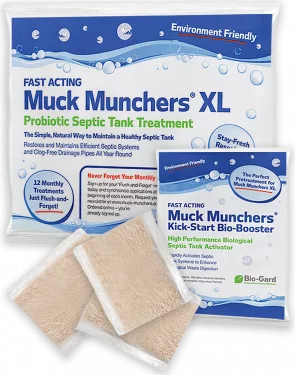Commercial Septic Tank Maintenance for Optimum Results
Commercial septic tank maintenance is key for businesses. It’s not just about reducing
business costs but, importantly, ensuring the comfort of clients and staff. As such, it will come
as no surprise that commercial systems require more care – and vigilance – than most
residential models.

What are the Differences Between a Commercial Septic Tank and a Residential Septic Tank?
It will be no real surprise that the answer is not a lot. Regardless of the type, both treat wastewater from premises where a mains connection is impossible. However, the most obvious difference is usage. Residential septic tanks are for home plumbing, while commercial tanks are used for buildings catering for much higher demand and capable of far more intensive use. Quite simply, wastewater volumes discharged to commercial septic tanks are much greater than what you’d find in a residential system and the maintenance issues more complex.
Commercial septic tank systems commonly support schools, public businesses, offices, hotels, residential care homes, restaurants, caravan parks and campsites, where there is no mains sewerage. It’s also commonplace to find package treatment plants used for commercial businesses rather than traditional septic tanks.
What’s more, commercial septic tank systems do need to be officially registered. It’s important to follow all the information provided by the government – for both residential and commercial solutions. Septic tank and package sewage treatment regulations vary between England, Wales, Scotland and Northern Ireland. The Government website sets out very clear guidelines on the regulations and what you need to do to comply with them.
Challenges Maintaining a Commercial Septic Tank
Managing a commercial septic tank means managing a constant flow of waste from potentially hundreds, even thousands of users per day. Therefore, ensuring everyone follows the basic rules of healthy septic tank flushing can prove difficult.
The simple fact is septic tanks and treatment plants of all sizes can quickly back-up, develop septic sludge and deplete the all-important bacteria if users flush inappropriate items.
Any items that fall outside of the three Ps – pee, poo and paper – can exacerbate bacterial performance and slow down septic tank waste digestion and drainage. Chemical cleaners, feminine hygiene products and nappies are just some of the more troublesome items likely to cause serious headaches for the average commercial tank owner.
In hospitality sectors, or any site with kitchen facilities, fats, oils and greases (FOG) present additional challenges. A prerequisite for most properties with catering facilities is to install an effective grease trap to limit FOG that can cause septic systems, including soakaways, to fail.
How to Save Money with Commercial Septic Tanks
When it comes to ensuring that customers avoid flushing inappropriate solids and liquids into septic systems the task is perhaps seemingly impossible. However, in a world where most people are increasingly environmentally aware, asking staff and customers to take greater care in what they flush, using simple, straightforward notices is likely to be well received.
Failure to educate customers and staff in what not to flush can result in you spending
extortionate amounts on pumping out your tank – when healthy use and regular bacteria top-ups can keep your system running for longer.
Generally, commercial tanks may need pumping more frequently than residential septic tanks – but regardless, you can still delay these costly arrangements by encouraging better flushing habits and topping up with bacteria regularly.
Challenges for Hotels, Restaurants and Pubs that Operate Commercial Septic Tanks
Buildings operating in the food, drink and leisure industries will likely handle more FOGs – fats, oils and greases. As many of these drain away in liquid form, they can easily solidify and cause blockages and sludge to slow down a septic tank’s operation.
FOG blockages are common problem areas for commercial septic tank owners, which is why installing efficient grease traps as part of your drainage system is advisable. Grease traps can help to reduce potentially hazardous FOG in drains, allowing your sinks, toilets and tank to continue running freely.
Benefits of Maintaining a Commercial Septic Tank for Your Business
The knock-on effects of a poorly maintained commercial septic tank are fairly obvious to smell. A tank that’s backing-up will create unpleasant odours that can deter customers and employees from using your facilities. Beyond that, the risk of any sludge or wastewater leaking from your tank may also pose a health hazard.
A well-maintained commercial septic tank is less likely to fail and hence reduce repair costs. If a commercial septic tank backs-up to such an extent that people can’t use your building or services, considerable downtime and hence unnecessary costs can be expected. When it comes to commercial septic tank issues, prevention is less hassle than cure – and cheaper too.
Ultimately, maintaining your commercial septic tank means its life can extend significantly. Constant blockages and sludge build-ups can lead to extensive damage and the necessity for repairs – meaning that you may need to completely re-fit your tank or dig a new soakaway system sooner than you expect.
Maintenance Plans for Commercial Septic Tanks & Commercial Sewage Treatments Plants
Setting up a regular maintenance plan for your commercial septic tank isn’t just a matter of keeping your system ticking over efficiently but also one of compliance, health and safety. It’s understandable that not all commercial septic owners will be experts on how to maintain and care for their drainage system, which is why ensuring a regular inspection plan with a local expert is important.
Regular inspections will ensure that your septic tank continues to operate at a healthy and efficient standard. Commercial septic systems that aren’t draining treated wastewater away efficiently can pose odour and health risks to your team and customers who depend on your facilities. As such, you have a duty of care to keep it well maintained by using a professional to check your system from time to time.
Potential Drain Field Issues for Commercial Septic Tanks
Finally, do keep in mind that drain field and soakaway issues can impact the performance of your commercial septic tank. Tree and shrub roots growing into a soakaway or through a septic tank outright can cause serious damage – and can slow down drainage.
You’re also at risk of damage from unsteady ground movements – which is why it’s never wise to install a commercial septic tank under a car park or anywhere that people will be driving around.
The other thing to understand is that drain fields and leach fields (the same thing) are generally only 50 to 80cm under the surface rely on air percolating through the soil to enhance residual waste digestion. Covering them with concrete or tarmac, or compacting the soil is simply a recipe for a future disaster.
In Summary
Maintaining a commercial septic tank can be challenging, even for those in the know. Keep your staff and other users up to speed on how to flush waste efficiently, and always have an inspection and maintenance plan in place. Adding a high-performance bacterial treatment, such as Mega Munchers, each month will save a fortune on pump-outs, keeping the chances of obnoxious odours near zero.











